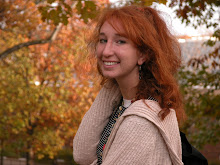Audience: Kalamazoo College Community
Professors Present Prose, Poems, and PersonalityNote: The writer of this article is an English Major and has been, will be, or currently is a student of the professors that were a part of the following reviewed event. Thus, a bias must be taken into account with regard to the writer’s pre-existing partiality to the affability of their personalities (and the knowledge that her work is regularly reviewed by them as well.) Upon entering the newly refurbished Olmsted room in Mandelle Hall last Wednesday evening, students, staff and community members could feel the energy of anticipation for the annual English Department reading. It is a unique event in a college community when professors simultaneously display their talent and become vulnerable in front of their students. By showcasing a wide variety of topics, styles and genres, the English professors also revealed a bit of their own distinctive personalities.
Andy Mozina, fearless leader of the department, kicked off the event reading an excerpt from his short story “My Nonsexual Affair.” His detailed character descriptions and carefully crafted dialogue allowed the audience to commiserate with the awkward relationship depicted in the story. Mr. Mozina’s masterful character and relationship development through conversation is reminiscent of Jane Austen, whom he currently teaches in his English Sophomore Seminar.
Following Mr. Mozina was Beth Marzoni, resident writer for the fall and winter quarters. She read her poem “Rothcoe’s Drum” with dramatic emphasis in a way that made the audience want to hold their breath. Her sensory descriptions of lemon groves and ancient cities brought the listener along on an artistic and colorful journey.
Next, Marin Heinritz, head of the journalism department, read from her memoir about her mother’s bout with cancer. Her phrase “My mother has always been a runner” set up the story beautifully for tales from her mother’s past and their subsequent telling details of her personality. Ms. Heinritz’s strong reading voice allowed her personal subject matter to shine.
Gail Griffin, organizer of the event, followed on a similar serious note reading from her book about the murder-suicide that took place at the college about ten years ago. Her smooth, powerful voice paired with her personal recollection of interviewing the victim’s family made the audience go quiet in contemplation.
Switching to a more humorous tone, Glenn Deutsch read from his short story “The Monkey Version of My Father.” His comical dialogue, personable manner and spot-on scene description—such as a comparison to an Edward Hopper painting—made it seem like the reading was a private account between Mr. Deutsch and the audience.
Amy Rodgers, visiting Shakespeare professor, also read from a personable narrative, even more personal than most since it was a “process piece”—literally the journey she took to create a play on the son of Robert Frost. Her witty, honest style made her piece easily accessible and relatable to the listeners.
For a turn of pace, Babli Sinha read from her conference paper on media and the south Asian novel. Ms. Sinha clearly displayed intelligence and passion on her subject, along with skillful storytelling ability that surpassed her form’s proclivity towards the pedantic.
Next, writer in residence Di Seuss read her poem “It wasn’t a dream, I knew William Burroughs,” a cheeky response to a poem titled “I dreamed I knew William Burroughs,” and “Birthday Confession” from her collection of poems about dressing in drag. As an experienced performance poet she had perfect pacing, pausing for reactions and slowing her voice to accentuate the edgy subject matter and ripe details of her language.
To finalize the event, Amelia Katanski read her prose in a sweet voice that contrasted nicely with her unexpected graphic descriptions of slaughtered animals, and Bruce Mills read from his memoir “Archeology of Yearning” about his son’s autism. His deep, personal tone topped off the event with an appropriate sense of intimacy, which had been present all throughout the night.
